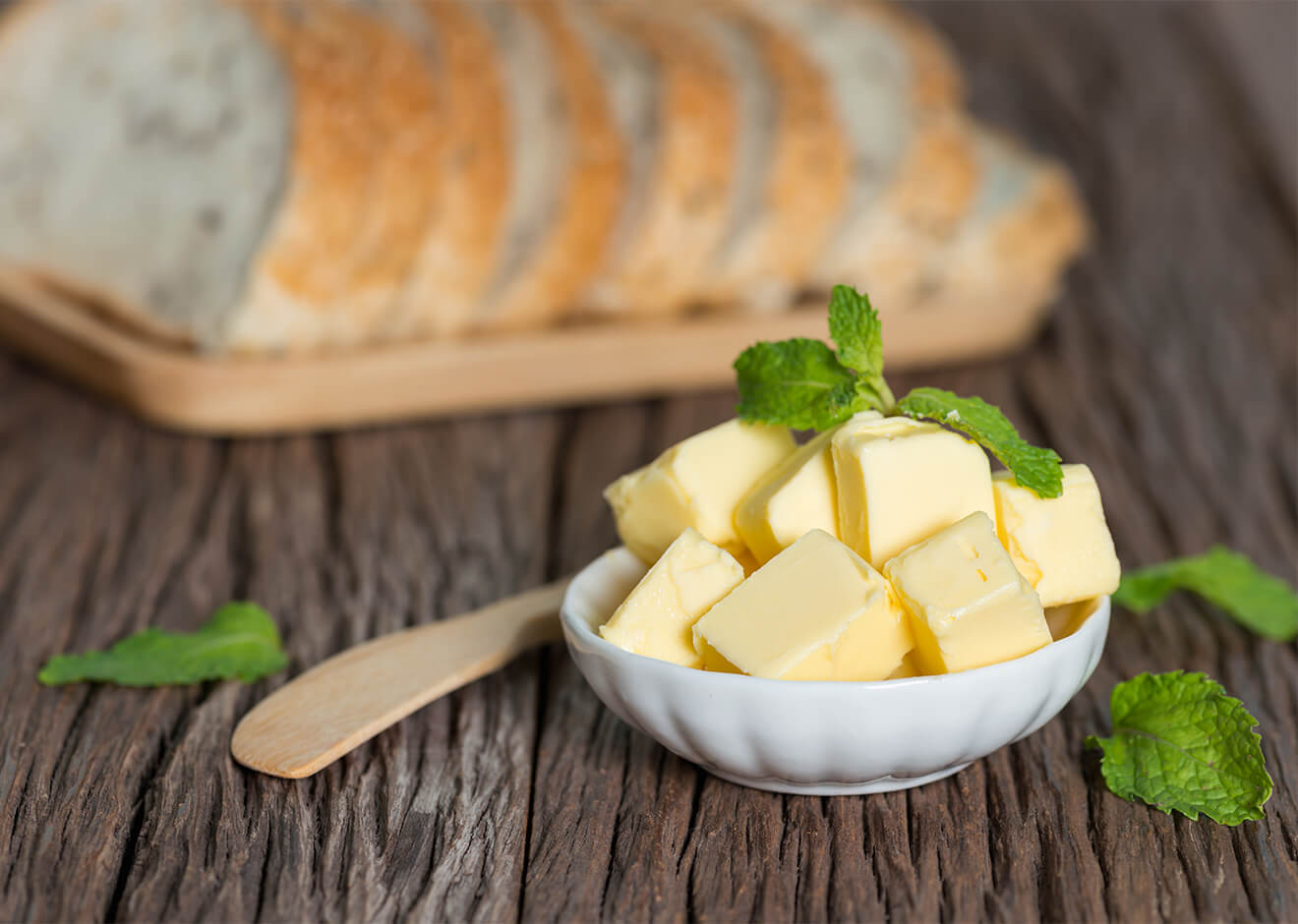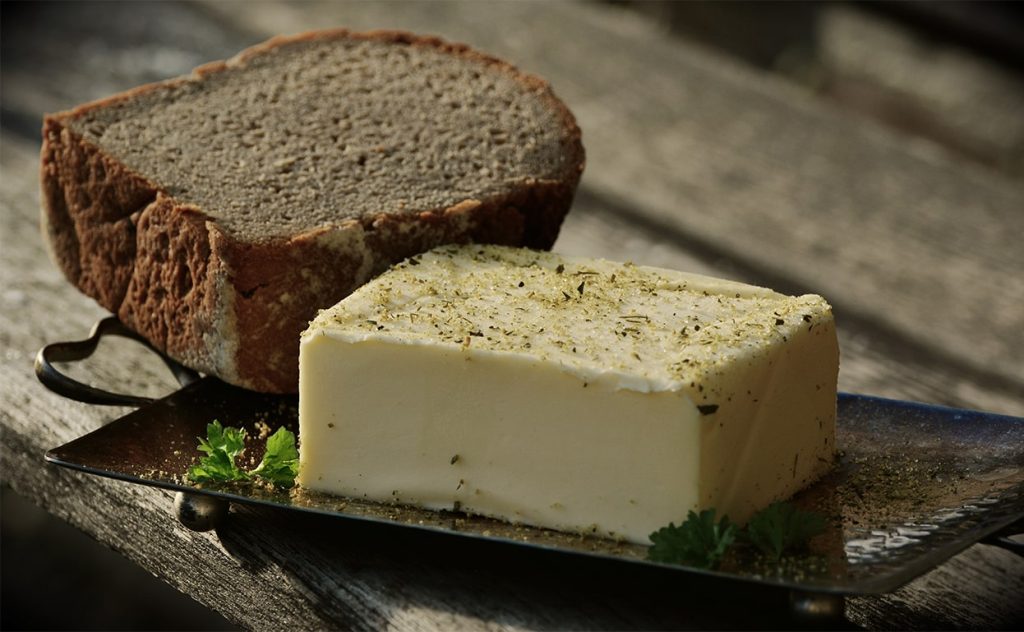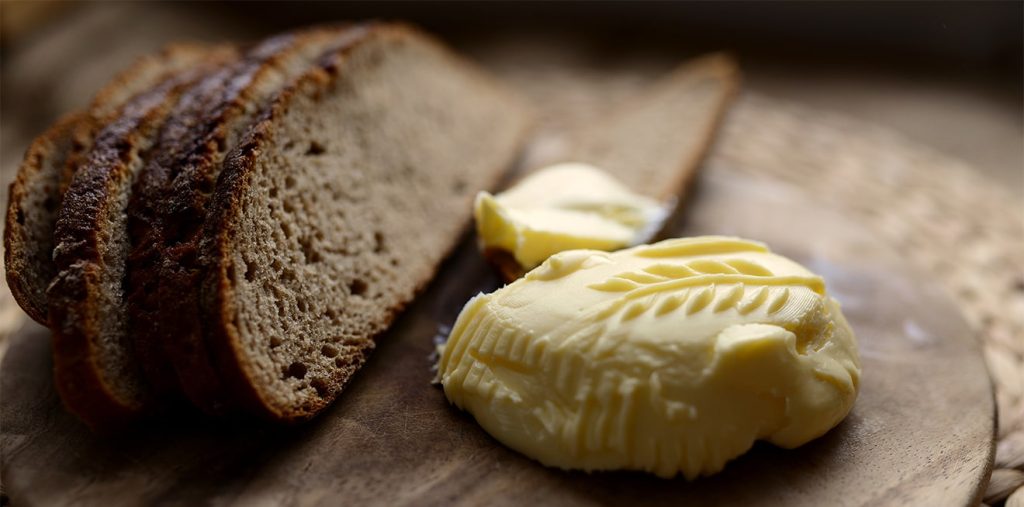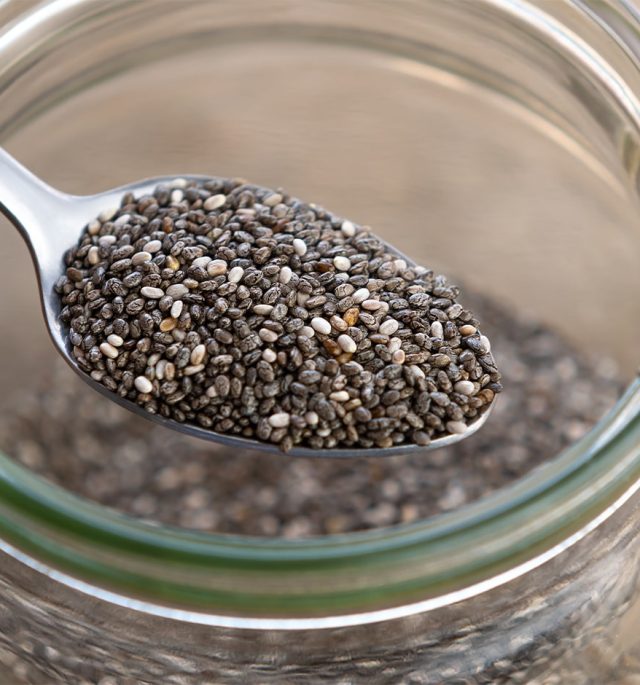
Table of Contents
When it comes to cooking and baking, choosing the right ingredients plays a crucial role in achieving the perfect flavor and texture. One such ingredient that often sparks confusion is butter. More specifically, the dilemma between regular butter vs unsalted butter.
We will examine the main distinctions between these two varieties of butter in this part, illuminating the subtleties that can have a big impact on your recipes. With this understanding, you’ll be more capable of making wise decisions in the kitchen.
First, let’s talk about unsalted butter, which is valued for its simplicity and unadulterated quality. Unsalted butter is created only from cream; salt is not added, unlike ordinary butter. This reduced salt content gives you greater control over the total amount of salt in your recipes.
The ever-favorite normal butter, also referred to as salted butter, comes next. As the name implies, a small amount of salt is added to salted butter while it is being made. This salt addition gives the butter a unique flavor that gives your food a rich, savory flavor.
After going over the fundamental distinctions between unsalted and butter, let’s take a closer look at each type of butter’s culinary uses and advantages. Whether you’re baking or trying to make the ideal savory dish, knowing the distinctive qualities of these butter types will improve your cooking skills.
So, let’s embark on this gastronomic journey and unravel the mysteries behind butter vs unsalted butter. Buckle up and get ready to enhance your kitchen skills with this delightful duo!
Salted Butter vs Unsalted Butter

One of the primary distinctions between unsalted and salted butter is the amount of salt in each type. Unsalted butter is created only of cream; salted butter has salt added to it. This variation in salt content can have a big effect on how your food tastes overall and how it tastes.
Let’s examine these two varieties of butter’s distinctions in more detail:
The Flavor Profile
When compared to unsalted butter, salted butter typically tastes richer and saltier. The extra salt intensifies the flavor and is particularly useful in savory recipes. It enhances the flavor of foods like meats and sautéed veggies by adding a flavorful punch.
On the other hand, unsalted butter tastes more pure and unflavored. It’s perfect for recipes where you want to regulate the amount of salty because of its pure cream base, which lets the other components shine.
Application in Cooking and Baking
Salted butter is commonly used in everyday cooking, where the added salt can enhance the overall taste of the dish. It lends itself well to sautéing, frying, and flavoring sauces. However, it’s important to consider the salt content in your recipe as using salted butter may affect the overall balance of flavors.
On the other hand, unsalted butter is often preferred in baking. Its lack of salt allows the baker to have full control over the salt content, especially in delicate baked goods like cakes, pastries, and cookies.
Salted Butter vs Unsalted Butter Comparison
| Characteristics | Salted Butter | Unsalted Butter |
|---|---|---|
| Taste | Rich and saltier | Clean and neutral |
| Common Usage | Everyday cooking, sautéing, frying | Baking, where precise salt control is desired |
| Flavor Influence | Adds a savory punch to dishes | Allows other ingredients to be the focus |
In conclusion, the particular recipe and intended flavor profile will determine whether to use salted or unsalted butter. While unsalted butter is preferred for baking because it gives you more precise control over the salt concentration, salted butter is good for regular cooking.
Cooking Applications for Salted Butter

Salted butter is a versatile ingredient commonly used in everyday cooking applications. Its distinct flavor adds depth and richness to various dishes, making it a favorite among home cooks and professional chefs alike.
Enhancing the flavor: The addition of salt in salted butter enhances the overall taste of dishes, especially in savory recipes. It brings out the natural flavors of ingredients and adds a delightful salty note that can elevate the dish to new heights.
Sautéing vegetables: When sautéing vegetables, using salted butter can bring out their natural sweetness while adding a savory element. The combination of the butter’s richness and the salt complements the flavors of a wide range of vegetables, from earthy mushrooms to vibrant greens.
Frying meats: Salted butter is also an excellent choice for frying meats. The salt enhances the meat’s taste, creating a delicious crust and sealing in the juiciness. Whether you’re pan-frying a juicy steak or browning chicken cutlets, salted butter adds a layer of flavor that takes the dish to the next level.
When using salted butter in your recipes, it’s important to consider the salt content to avoid overpowering the flavors. Adjust the amount of additional salt in your dishes accordingly, keeping in mind that salted butter already has a sodium component.
Benefits of Unsalted Butter in Baking

When it comes to baking, using unsalted butter offers several key benefits that can elevate your culinary creations. Let’s explore why unsalted butter is often preferred by bakers:
- Control over Salt Content: By using unsalted butter, bakers have full control over the salt content in their recipes. This is especially important in delicate and precise baked goods like cakes, pastries, and cookies, where the balance of flavors is crucial. Having control over the salt allows bakers to fine-tune the taste and avoid an overly salty final product.
- Neutral Flavor Profile: Unsalted butter has a clean and neutral flavor, allowing other ingredients in your recipe to shine. This is particularly desirable in baking, where you want the flavors of your chosen ingredients to be at the forefront without the interference of a salty undertone. Whether it’s the rich chocolate in a cake or the delicate aroma of vanilla in cookies, using unsalted butter ensures that the flavors are not overshadowed.
- Consistency in Results: Baking is often seen as a precise science, and using unsalted butter contributes to achieving consistent and reliable results. The absence of salt in unsalted butter means that you won’t have to adjust the balance of other ingredients to compensate for the additional salt. This consistency is especially important when following a trusted recipe or when baking for special occasions.
So the next time you embark on a baking adventure, consider reaching for unsalted butter. Its benefits, including control over salt content, a neutral flavor profile, and consistent results, make it a valuable ingredient in creating delectable treats.
Flavor and Salt Content
Salted butter is widely recognized for its savory and creamy flavor. For individuals who prefer a bolder, saltier taste in their food, this is a popular option because adding salt improves the whole flavor profile. When using salted butter in recipes, it’s crucial to taste it and adjust the salt content based on brand variations. This gives you complete control over the salinity and guarantees the ideal harmony of flavors.
Unsalted butter, on the other hand, has a more pure and subtle flavor. Because unsalted butter doesn’t have salt added, the flavors of other ingredients can come through naturally, making it a flexible foundation for a wide range of culinary creations. Because of this, it’s a better option for recipes where you want total control over the flavor and seasoning.
Shelf Life and Storage
Both salted and unsalted butter have a relatively long shelf life. However, due to the salt content in salted butter, it can have a slightly longer shelf life compared to unsalted butter. It’s important to store both types of butter in the refrigerator to maintain their freshness and quality.
| Butter Type | Shelf Life | Storage |
|---|---|---|
| Salted Butter | Several weeks to a few months | Refrigerate at a temperature below 40°F (4°C) |
| Unsalted Butter | Several weeks to a few months | Refrigerate at a temperature below 40°F (4°C) |
You may keep unsalted and salted butter in the refrigerator for a long time without risk, so it’s always fresh and ready for your delectable dishes. To keep the butter from being exposed to air or the smells of other foods, make sure to wrap it tightly or place it in an airtight container.
You can also keep extra butter in the freezer if you don’t think you’ll use it all within the suggested shelf life. Butter is a useful option for future usage since freezing it can greatly extend its shelf life. To prevent freezer burn, just make sure you wrap it tightly in foil or store it in a freezer-safe container.
Your salted and unsalted butter will stay tasty, fresh, and ready to enhance your baking and cooking projects if you store it correctly.

The choice between butter and unsalted butter ultimately boils down to the particular recipe and flavor profile that are wanted. An adaptable choice that is great for regular cooking is salted butter, which gives meals like pan-fried meats and sautéed veggies a rich, savory flavor. In savory recipes, the taste is enhanced by the addition of salt to salted butter.
However, unsalted butter is the best option for baking since it gives bakers total control over how much salt they use in their recipes. This is crucial when making intricate and precise baked items like cookies, cakes, and pastries. The end result will retain a balance of tastes without an overbearingly salty taste if unsalted butter is used.
It’s important trying both kind of butter to see which is best for your recipes. When using salted butter, taste and adjust as necessary because different brands have different salinity levels. Meanwhile, you can adjust the saltiness of your baked goods to your own taste by using unsalted butter in your recipes.
- March 8, 2024
- 4 Min Read
Are air-fryers healthy? Get the facts on the health benefits and potential drawbacks of air-fryers in this comprehensive blog post.
- March 4, 2024
- 8 Min Read
Discover the potential of chia seeds for weight loss with our professional advice, suggestions, and recipes.





